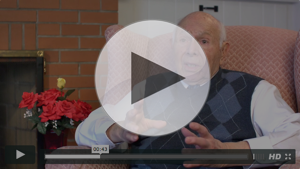In 2008 a critical care specialist at Johns Hopkins, Dale Needham, M.D., Ph.D, reviewed studies of intensive care unit (ICU) patients and data from The Johns Hopkins Hospital and concluded that the routine use of deep sedation and bed rest in ICU patients may be causing unnecessary and long-term physical impairment and poor quality of life after hospital discharge. According to Needham, “The benefits of getting hospitalized patients out of bed and moving were understood during World War II with battlefield injuries….My review shows it may be time to go back to the future. It’s becoming clear that the safety and benefits of early mobilization are real and that it’s better to get moving sooner rather than later.” (Hopkins Medicine).
Aeronautic researchers also looked at the effects of immobility and weightlessness on human physiology years ago when preparing for early space flights. Studies confirmed that long periods of immobility are detrimental to health and adversely affect all major organs (Sprague). So what are some of the consequences of prolonged bedrest? To name just a few:
- muscles can start to atrophy and muscle strength declines
- pulmonary function is reduced which leads to a greater risk for pneumonia
- risk for venous stasis which can lead to deep vein thrombosis
- tendency for increased resting heart rate and decreased cardiac output
- orthostatic intolerance - which may occur even quicker with the elderly
- compromised skin integrity raising the risk for pressure ulcers
- constipation
Early mobility during an illness, injury and post-operatively is imperative not just for physiological health but for overall well-being. Benefits of early mobility include but are not limited to the following:
- maintain muscle strength
- better pulmonary function
- better cardiovascular function
- prevent constipation
- maintain skin integrity
- reduce pain and/or reduce need for pain medications
- improve mood, reduce anxiety and have sense of empowerment/control
Ideally one will be up and walking during a medical recuperation period however if this is not possible, even the simple act of sitting and dangling legs or transferring to a chair is beneficial. The AgileLife system is ideal in the latter situation as one can not only transfer gently and safely to a docked wheelchair but the wheelchair converts to a commode if necessary often eliminating the need for the dreaded bedpan! In addition it saves the backs of caregivers since it is a truly “Zero lift” option.
Written by: Christine Dunster, Clinical Director, Next Health
References:
Hopkins Medicine http://www.hopkinsmedicine.org/news/media/releases/get_moving_johns_hopkins_research_shows_early_mobility_better_than_bed_rest_for_icu_patients
Sprague, A.E. (2004) The evolution of bed rest as a clinical intervention. Journal of Obstetric, Gynecologic andNeonatal Nursing; 33: 5, 542–549

